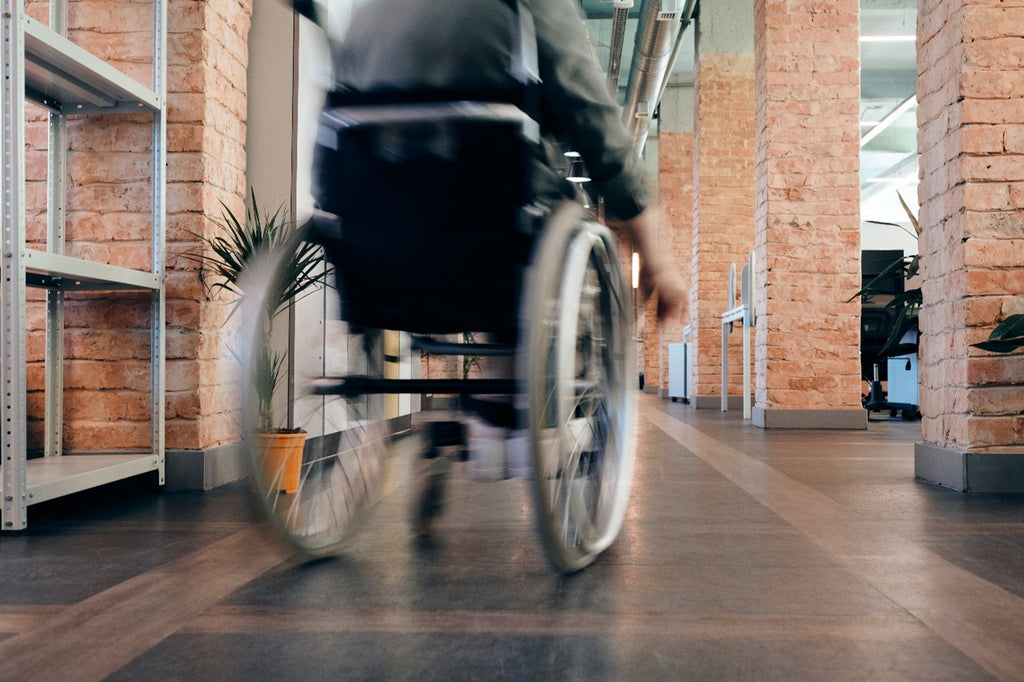Pressure ulcers are basically places on your skin where damage occurred and where the skin and the tissues underneath broke down. These ulcers range in how severe they are and in some rare cases can even cause death. Here is an introductory guide to pressure sores.
If the ulcers are diagnosed early on and are taken care of in the right way, this can be prevented. This guide serves as an introduction to pressure care. It is aimed at helping individuals as well as caretakers have the best information at hand to help prevent pressure ulcers from forming.
It is also aimed at teaching you how to check for them so that they can be spotted in the early stages. By following the advice in this guide, the risk of ever developing a pressure sore can in this way prevent a lot of pain and discomfort can be eliminated.
What Is A Pressure Sore?
Did you know that our bodies were not really designed to be seated or be lying down for a long period of time? Many who are disabled have no other choice and must remain seated or lying down.
When we are not able to feel some parts of our bodies becoming uncomfortable or damaged because of pressure or friction, a pressure sore may develop.
Pressure sores range in seriousness and severity. They can appear to be just a redness in the skin or a very open wound with muscles visible.
Therefore, it is of the utmost importance that we check our bodies regularly, to catch these sores before they escalate.
How Are Pressure Sores Caused?
When seated or lying down for a long time, pressure of the bone against the skin causes the skin to squash, restricting the flow of blood. When squashed like this, oxygen cannot get to the squashed skin to deliver nutrients that are vitally needed.
After some time, skin tissues become damaged because of lack of nutrients. Sometimes because of the condition the disabled person is in, they can slip down a chair or bed, pinching the skin and thereby stretching it. A condition called shear.
The temperature of the skin and the moisture of it can also play a role in the development of a pressure sore.
Where Do Pressure Sores Usually Appear?
Just try to find the boniest areas on your body. Your bottom perhaps, or maybe the heels of your feet, your elbows or even an area of your head.
The point is, if you put pressure on these areas by sitting or lying down for an extended period, you could have pressure sores developing there.
How To Check For Warning Signs
One extremely important way to check for a pressure sore is to look for redness in skin that is light and bluish/purplish patches on skin that is darker.
You must press your fingers over the area for 15 seconds. If the area becomes whiter then it is not a pressure sore. However, if the discoloration continues to remain, then you must get a second opinion from a friend or a colleague. Better yet, contact your doctor.
Also check for swellings or dry patches, torn skin, blisters, soft, hard or cold areas of the skin. These could be indications of the advance of pressure sores.
Ways To Reduce The Risk
This guide is not meant to scare anyone, rather it is meant to provide extra information or advice. If you find it difficult to move about or have certain areas of your body that you cannot feel, you are at a higher risk of developing pressure sores.
If you have gone through surgery recently, have poor blood circulation or smoke and have low fluid intake as well as have a poor diet, you would need to be extra careful when checking your body for pressure sores.
Here are a couple practical tips you can implement to reduce the risk of getting pressure sores:
-First, check your skin and see if there are any signs of skin damage. Do this at least once a day if you find yourself in the lying or sitting position for long periods. If you can. Try to move your body around for about five minutes every hour. This is necessary to get your blood flowing again in those damaged areas.
-Move around a lot. Make sure that you change your position regularly and that you turn, to move your weight off the areas that are bony on your body. You could even roll from side to side in your bed every half hour if you are able to. This helps to remove pressure and helps with blood flow.
-What you could also do, is reposition yourself in the wheelchair every 20-30 minutes. You could do this by rolling from side to side, by leaning forward or by doing minor lift offs. Lift offs are done by pushing yourself up on your armrests to relieve some of the pressure from your bottom.
-Do you have to sit or lie down for long periods of time? Then make sure that you have a cushion that is suitable as well as a mattress that can reduce damage and subsequently the formation of pressure sores.
-Do not forget that a balanced diet is a pillar and a key foundation for the elimination of diseases. Make sure that you eat a balanced diet and consume lots of fluids.
-Lastly, make sure that your skin remains clean and dry. Use mild soaps that are non-drying. When drying yourself do not rub too hard. If you have incontinence issues, choose to wash your skin with a gentle soap and pat dry immediately after washing.
Conclusion
We hope you liked our article on an introductory guide to pressure sores, and that it was helpful. Please let us know if you have any questions or if you would like to see more of these types of articles to our site.
We also have a special offer for you. Enter coupon code EW6 at checkout and it will apply a 6% discount. This offer won't be around long, so act soon! See product pages for details and if you have any questions feel free to give us a call at 800-682-9444. One of our agents will be happy to assist you. We are open every day from 8AM - 8PM est!
If you are more interested and looking for other related articles, our staff compiled a great list of articles you might find interesting like Understanding Leg Rests For Wheelchairs and Your Individual Needs and Choosing The Right High-Back Wheelchair. We've had some great feedback on those articles as well.
Feel free to write me anytime at kellon@electricwheelchairsusa.com if you have any questions or comments. At Electric Wheelchairs USA, we truly love helping our customers make the best choice for their needs whether it is a power chair, mobility scooter, or lift chair.







